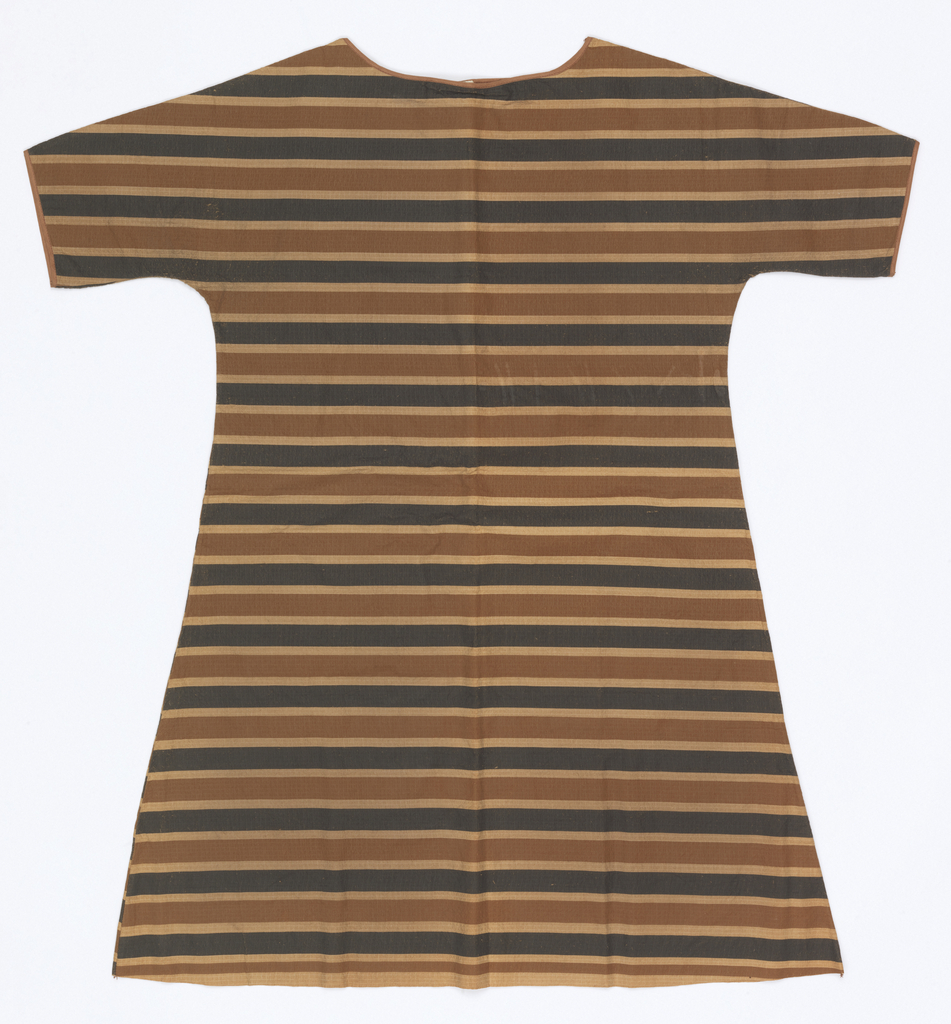In March of 1966, Scott Paper Company created the first paper dress as a promotional ad gimmick to help sell their product. To receive their newest paper fashion, customers simply mailed in a coupon from a Scott product along with a small fee (around $1.25) and in return they would receive for their paper dress. This advertising gimmick quickly and unexpectedly caught on with consumers. At the height of production and popularity, The Mars Manufacturing Company of Asheville North Carolina, responsible for the creation of the Cooper-Hewitt’s paper dress, sold between 80,000 and 100,000 dresses each week.
For many Americans in the 1960s, participating in the culture of mass consumption was a way of engaging with the new modern age. Consumerism and consumption thus became equated with a belief in modernity and the future. Ephemeral objects fulfilled the desire for owning the newest and latest products without a long-term financial commitment, leaving the owner free to replace or refresh their possessions whenever they fancied. Throwaway clothing fit neatly into a futuristic vision of the world where everything was conveniently automated and fashions changed at the speed of light.
The silhouette of the Cooper-Hewitt’s paper dress fits seamlessly into contemporary trends with its short hem and A-line shape that was favored particularly by the Mods (a prominent youth culture of the time). Additionally, the 2-dimensionality of the paper dress was the perfect canvas for transferring the daring and graphic prints of the contemporary art scene to the fashion world as a sort of wearable billboard. In fact, the advertising potential of these dresses was so great, that they were adapted for everything from Campbell’s soup advertisements to propaganda for the Nixon Campaign. Paper dresses represented the combined interest in fashion, pop/op art and popular culture that was prevalent in the 1960s.
People predicted that by 1980, paper dresses would take over the clothing industry altogether. In the midst of growing environmental concerns and distaste for government policies however, the propensity for paper dresses was quickly seen as frivolous in comparison. The fashion for paper garments burned brightly but was short-lived as the Mod and Pop styles were overturned by the hippie lifestyle that valued a “back-to-nature” attitude. The disposable garment, though no longer the forefront of vogue fashions, remains a prominent fixture of our society’s landscape however, in hospital settings as well as in the restaurant and factory industry.
Kristina Parsons is a Masters student in the History of Decorative Arts and Design program at the Cooper-Hewitt National Design Museum/ Parsons New School for Design. After graduating from Columbia University in 2013 with a background in Art History, she is pursuing her interests in costume history and contemporary design while assisting the Drawing, Prints and Graphic Design curatorial department as an MA Fellow.

4 thoughts on “Waste Basket Boutique”
Teresa Gately Zorio on January 21, 2015 at 2:03 pm
I just found my paper dress from the mars Company 8-10 Tiny made in the Yellow Pages design. Just tried it on, my kids have been hearing my story about this for years so I just sent them a photo… so much fun, my mother had a silver evening gown paper dress too.
Robert Smith on April 21, 2015 at 6:57 pm
I have just recently visited the National History Musem in Mexico City where a an exposition of clothing from their permanant collection is mounted. I was suprized to see a paper dress that had been produced by a company called Mars of Asheville, especially since I am orginally from a small town in that same area of North Carolina. I was a child at the time when the “Waste Basket Botique” was so pouplar and never knew that it had even existed. Thank you Cooper Hewitt for enlightening me on the subject!
Miss Wilson Farrar on July 7, 2019 at 4:46 pm
How exciting! I just happened upon such a dress at a vintage consignment shop and bought it without knowing the history! Having been morn “around that time” it is particularly exciting to see it!
Mine is silver paper and I am excited to wear it, though now I am inclined to have a replica made and keep the original on display as art!
Miss Wilson Farrar on July 7, 2019 at 4:47 pm
How exciting! I just happened upon such a dress at a vintage consignment shop and bought it without knowing the history! Having been born “around that time” it is particularly exciting to see it!
Mine is silver paper and I am excited to wear it, though now I am inclined to have a replica made and keep the original on display as art!
Thank you for enlightening me on the dress!